I noticed the pure honduran red points on TUIC listed as amatitlania cf. nigrofasciata and got confused, so I was just wondering...
Are honduran red points nigrofasciata now?
- Thread starter Hybridfish7
- Start date
You are using an out of date browser. It may not display this or other websites correctly.
You should upgrade or use an alternative browser.
You should upgrade or use an alternative browser.
Changes in taxonomy aren’t always published on the internet and sometimes vendors find out first. But he still calls melanura synspilum like they are listed as two different species so there’s that. Maybe to show distinction but most other species don’t use another name for a catch location, the location is listed and that’s enough.
I just thought they were considered their own species because there was enough physical distinction between them and siquia, and if there is distinction between them and siquia there should seemingly be distinction between HRPs and nigrofasciata because as far as I know the only real distinction between siquia and nigrofasciata is DNA as a result of geography being their only barrier. But then wasn't there a paper saying HRP were genetically distinct from both too?
It's written cf. nigrofasciata. So he is comparing it to nigrofasciata and is not sure if it is nigrofasciata.
CF. on Wikipedia
CF. on Wikipedia
ah I see, I just thought the cf. bit was when something is believed to be a species like p. cf. wingei or a. cf. cirrhosus
Below is a paragraph located in the Amatitlania nigrofasciata species profile of the Cichlid Room Companion (Cichlidae.com)
It is "the" place I go to find updated, yet valid info, on what is going on in cichlid-dom.
In April 1989, Ross Socolof, Harry Specht and Rusty Wessel collected in northern Honduras a geographical variety of Amatitlania nigrofasciata with a vivid blue hue, which it stroke them as so different from the regular aquarium strain (already washed out in coloration) that they considered it as potentially new and provisionally name it “Honduras red point” (Wessel, 2006). “Red point” (punto rojo) is a common name in Honduras for the convict. The given distribution range was from the Papaloteca drainage in northern Honduras, where the collected it at Rio Monda (referred to as “Rio Mongo”) south to Danli (east of Tegucigalpa) in the Patuca drainage at Los Almendros river (referred to as “Rio Los Amadros”), this form apparently has being established in the aquarium hobby and quite likely being selectively bred to obtain bluer fish, in the process the barred pattern has apparently been affected. The DNA studies by Bagley et al. (2016) used some populations in the given distribution area (from both Rio Papaloteca and Rio Patuca), proving that this form is no different from A. nigrofasciata.
It is "the" place I go to find updated, yet valid info, on what is going on in cichlid-dom.
In April 1989, Ross Socolof, Harry Specht and Rusty Wessel collected in northern Honduras a geographical variety of Amatitlania nigrofasciata with a vivid blue hue, which it stroke them as so different from the regular aquarium strain (already washed out in coloration) that they considered it as potentially new and provisionally name it “Honduras red point” (Wessel, 2006). “Red point” (punto rojo) is a common name in Honduras for the convict. The given distribution range was from the Papaloteca drainage in northern Honduras, where the collected it at Rio Monda (referred to as “Rio Mongo”) south to Danli (east of Tegucigalpa) in the Patuca drainage at Los Almendros river (referred to as “Rio Los Amadros”), this form apparently has being established in the aquarium hobby and quite likely being selectively bred to obtain bluer fish, in the process the barred pattern has apparently been affected. The DNA studies by Bagley et al. (2016) used some populations in the given distribution area (from both Rio Papaloteca and Rio Patuca), proving that this form is no different from A. nigrofasciata.
But wasn't it also determined that the fish in the "danli" locale were separate from all the surrounding ones like the rio mongo/claro ones and those blue fish with red fins being synonymous with siquia rather than the actual danli locale, and I'm assuming if they took fish from other areas around those locales for testing then it would be plausible to think that those are also different from the small slim bodied fish we know as danli HRPs?
not to mention other subtle differences like how at least in my experience, HRPs are more built like bottom dwelling fish, and the fact that they only lay at most around 50 eggs as opposed to the 600-800 I get out of convicts? I just worry about another wave of hybridization like the one we had a few years ago when it was considered that the danli locale was synonymous with siquia.
not to mention other subtle differences like how at least in my experience, HRPs are more built like bottom dwelling fish, and the fact that they only lay at most around 50 eggs as opposed to the 600-800 I get out of convicts? I just worry about another wave of hybridization like the one we had a few years ago when it was considered that the danli locale was synonymous with siquia.
Location variants adapt to what is a best defense in that geographic location, and color may be a large factor in survival.
Just like melanurum, and the now defunct synspillum, what's a better defensive coloration in Belize, may nor be best a in Lake Bacalar.
Take these two Chuco intermedium below, both the same species, but different rivers (location variants).
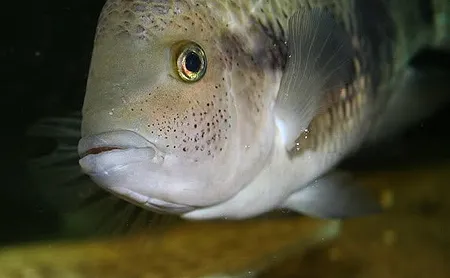
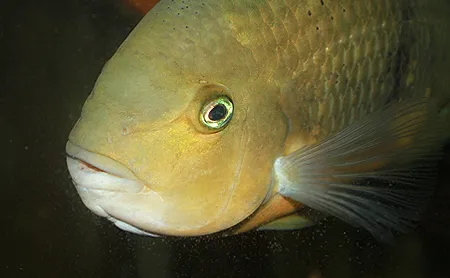
Topography such as substrate, plant life, rock formations allow the fittest to survive in a certain area.
Same is true for some Herichthys, although difference smay be more subtle between say location "Chairel or Rio Hondo, or Laguna Escondido.
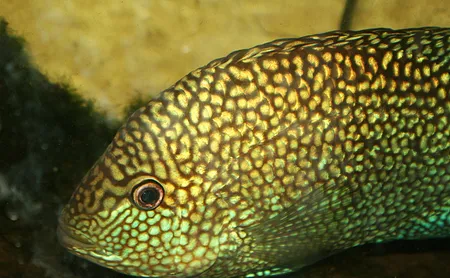
Location "Chairel" above, a different variant below I cichlid sat for a friend..
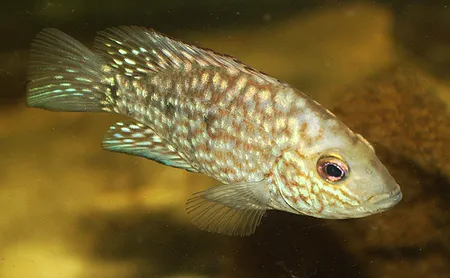
But when spawning, just because they are the same species, doesn't mean they should be allowed to interbreed,
Combining a normal convict, with Honduran RedPoint may end up producing a much less desirable, much ore washed out set of progeny.
And it may not become apparent until a year down thread.
I always keep variants separated, and also even those species of the same genus, in different tanks.
And there is also the problem that as science evolves , changes in taxonomy may become even more specific.
An example might be Paratilapia in Madagascar.
For years all Paratilapia in the aquarium trade were considered pollen, now we realize there may be 6 different species and by ignorantly letting them randomly breed, we may have homogenized , a less interesting aquarium strain.
Below Paratilapia sp small spot
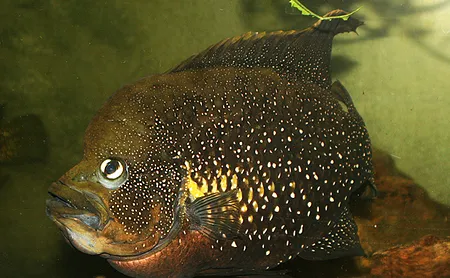
Below Paratilapia sp Andapa.
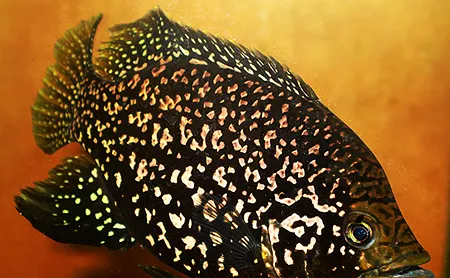
The now average aquarium strain found in LFSs is often less interesting.
Just like melanurum, and the now defunct synspillum, what's a better defensive coloration in Belize, may nor be best a in Lake Bacalar.
Take these two Chuco intermedium below, both the same species, but different rivers (location variants).


Topography such as substrate, plant life, rock formations allow the fittest to survive in a certain area.
Same is true for some Herichthys, although difference smay be more subtle between say location "Chairel or Rio Hondo, or Laguna Escondido.

Location "Chairel" above, a different variant below I cichlid sat for a friend..

But when spawning, just because they are the same species, doesn't mean they should be allowed to interbreed,
Combining a normal convict, with Honduran RedPoint may end up producing a much less desirable, much ore washed out set of progeny.
And it may not become apparent until a year down thread.
I always keep variants separated, and also even those species of the same genus, in different tanks.
And there is also the problem that as science evolves , changes in taxonomy may become even more specific.
An example might be Paratilapia in Madagascar.
For years all Paratilapia in the aquarium trade were considered pollen, now we realize there may be 6 different species and by ignorantly letting them randomly breed, we may have homogenized , a less interesting aquarium strain.
Below Paratilapia sp small spot

Below Paratilapia sp Andapa.

The now average aquarium strain found in LFSs is often less interesting.
Last edited:
I collected the Rio Monga fish in Saba, it was called the hrp for a while I think I called it hrp at one point too, which mean next to nothing haha, that fish is different than one from danli...body shape,color easy to tell the difference, different species between the 2 who knows but differences are there


